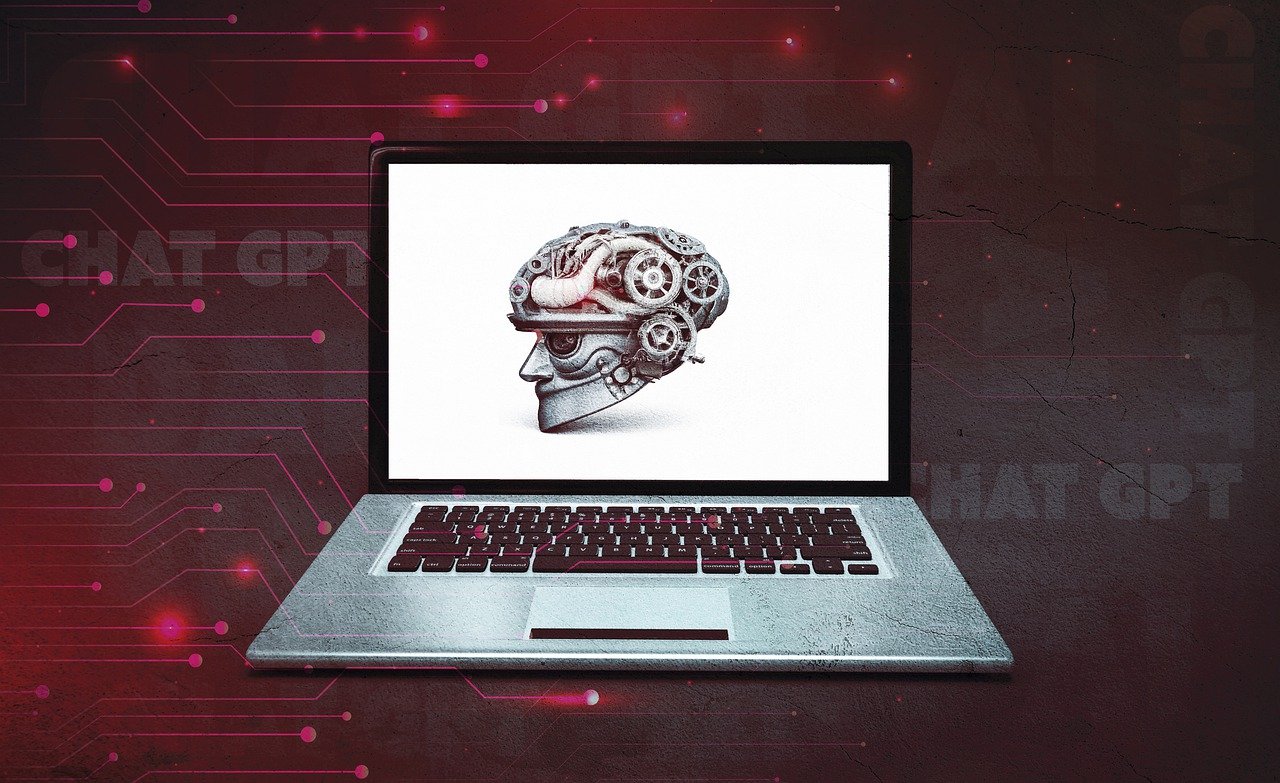Embracing Data and AI Literacy: A Practical Guide to Empowering Your Career Are you feeling overwhelmed by the constant buzz about AI and data? You’re not alone! We’re in the midst of a massive technological transformation, with artificial intelligence reshaping industries, creating new opportunities, and increasing the importance of data as a valuable asset. For those without a technical background, this surge of information can feel like too much, leading to uncertainty, fatigue, and even apprehension about what the future holds. This article aims to demystify data and AI, breaking down the barriers to entry and encouraging you to develop data and AI literacy. Why Data and AI Are Everywhere (And Why It Matters to You) Data and AI aren’t just technological buzzwords; they’re now critical components of modern life and work. Artificial intelligence drives innovations across sectors, from personalized online shopping to improved healthcare outcomes and predictive maintenance in manufacturing.
Data, meanwhile, fuels these systems, guiding decisions and helping companies understand customer needs, improve processes, and even forecast trends. For businesses, data and AI provide a competitive edge, allowing them to adapt to changing market conditions and customer expectations quickly. However, for the average employee or non-tech professional, the explosion of AI and data can create a sense of pressure. There’s a perception that everyone needs to “keep up” or master complex algorithms, programming languages, and technical jargon. But is it really necessary to become a data scientist or an AI programmer to thrive in this world? The answer is a resounding no. What’s essential is building comfort and confidence in working with these technologies, regardless of your role or technical background. This is where data and AI literacy come into play. These are the foundational skills that can help you stay relevant in an AI-driven world, equipping you to navigate the changes AI is bringing without needing to dive deeply into the technical aspects.

Data and AI literacy empower you to answer crucial questions such as: What is my role in the world of data and AI? How do I contribute to conversations about data and AI? Will AI take over my job? How can I prepare for changes driven by AI? By addressing these questions, data and AI literacy allow everyone, regardless of their expertise, to feel like they have a seat at the table. Overcoming the Overwhelm: A Simple Framework for Getting Started Let’s face it: diving into AI and data is overwhelming. There’s so much information out there, from research papers and online courses to news articles and industry whitepapers. It’s a similar feeling to being handed a Cheesecake Factory menu—the countless choices can make it hard to know where to start. Similarly, figuring out where to begin your journey with AI and data may feel like an impossible task. Here’s the good news: You don’t need to “boil the ocean.”

Starting small and focusing on the basics can lead to significant growth over time. Just as with any skill, the key to mastering AI and data literacy is to break it down into manageable steps and set realistic goals. Data Literacy: Understanding the Basics of Data Data literacy is often defined as the ability to read, work with, analyze, and communicate data. This may sound technical, but the reality is that data literacy starts with learning to interpret simple datasets, identify trends, and use data in decision-making processes. Learn to Interpret Data: Start with familiar tools, like spreadsheets or visual dashboards. Look for patterns in data that relate to your work, whether it’s sales figures, website analytics, or customer feedback trends. Focus on Asking the Right Questions: Data is only valuable if you know what you’re looking for. Practice framing questions that are specific, measurable, and actionable. For instance, instead of asking, “How is my team performing?” ask, “What are the key performance metrics for my team, and how have they changed over the past quarter?” Understand Data Sources: Not all data is created equal.

Get familiar with the sources of the data you work with, whether internal reports, market research, or industry benchmarks. Knowing the origin of your data helps you interpret it accurately and avoid common pitfalls. Communicate Your Findings: The ability to share insights is a crucial part of data literacy. Practice summarizing your data insights in simple terms for different audiences, from colleagues to executives. This skill is valuable in helping stakeholders understand and act on data-driven insights. AI Literacy: Leveraging Artificial Intelligence in Practical Ways AI literacy involves understanding what AI can and cannot do, as well as how to use AI tools effectively. This doesn’t mean you need to be a machine learning expert. AI literacy is about being informed and comfortable with using AI tools and understanding how they apply to your work. Familiarize Yourself with Common AI Tools: AI is already embedded in many everyday tools, from virtual assistants like Siri and Alexa to business software that includes predictive analytics.

Spend time experimenting with these tools, observing how they work, and understanding their limitations. Understand AI’s Strengths and Limitations: AI can automate repetitive tasks, identify patterns in vast datasets, and assist with predictions, but it’s not infallible. By recognizing what AI can and cannot do, you can set realistic expectations and use AI effectively without relying on it for everything. Embrace Generative AI: Generative AI, such as chatbots and content creation tools, is one of the fastest-growing areas of AI. Experimenting with these tools can give you hands-on experience with how AI generates text, images, and even code. By learning what generative AI can produce, you can explore how it could add value to your work. Use AI to Augment Your Skills: Instead of seeing AI as a replacement, view it as an augmentation tool. For instance, if you’re in marketing, use AI to analyze audience preferences, segment customers, or generate content ideas.

In finance, AI can assist with forecasting or risk assessment. Common Concerns About AI in the Workplace As AI continues to evolve, it’s natural for concerns about job security and the impact of AI on human work to arise. Many people wonder if AI will replace jobs and, if so, how they can remain relevant. While some jobs may be affected by automation, most will change in a way that requires new skills rather than being eliminated altogether. The real risk isn’t that AI will replace human jobs but that it will replace tasks within jobs. This means that roles are likely to evolve, requiring workers to adapt by developing complementary skills that AI can’t easily replicate, such as critical thinking, creativity, and emotional intelligence. The Role of Data and AI Literacy in Career Development Data and AI literacy aren’t just buzzwords; they’re pathways to professional growth. By developing these skills, you’re not only future-proofing your career but also setting yourself apart from peers who may feel stuck or overwhelmed by these topics.

Identify Opportunities for Innovation: By understanding data and AI, you can identify areas within your role or industry that could benefit from new technologies. This positions you as a forward-thinking, adaptable professional—qualities that are highly valued in today’s job market. Gain Confidence in Decision-Making: Data and AI literacy provide you with a toolkit for making informed, data-driven decisions. This can boost your confidence in taking on new responsibilities, pitching ideas, or proposing changes in your organization. Communicate with Technical Teams: Developing a basic understanding of AI and data allows you to bridge the gap between non-technical and technical teams. You’ll be able to engage in discussions with data scientists or AI experts more effectively, making you a valuable asset in cross-functional projects. Stay Relevant in a Changing Job Market: Industries are evolving rapidly, and so are the skills required to thrive. By cultivating data and AI literacy, you’re ensuring that you remain competitive and capable of adapting to new trends and technologies.

Overcoming the Fear of Data and AI: Embrace a Growth Mindset The most significant barrier to data and AI literacy isn’t lack of skill or knowledge; it’s fear and the misconception that only “tech people” can understand these concepts. The key to overcoming this fear is to approach data and AI with a growth mindset. Embrace the idea that learning is a gradual process and that each step you take, no matter how small, is a valuable step forward. Start with topics that interest you or align with your job responsibilities. Take advantage of free resources, such as online courses, tutorials, or even informal discussions with colleagues. Building a Culture of Data and AI Literacy in Organizations For organizations, fostering a culture of data and AI literacy can lead to significant benefits, from improved decision-making to more innovative solutions. Companies can support this culture by investing in resources, training programs, and encouraging an environment where employees feel comfortable asking questions and experimenting with data and AI tools.

Encourage team members to share their experiences with data and AI, celebrate small wins, and acknowledge progress, regardless of expertise level. Creating a supportive environment can help break down the intimidation that often surrounds AI and data, making these tools more accessible to everyone. Final Thoughts: Moving Forward with Confidence Data and AI literacy are no longer “nice-to-haves” but essential skills in today’s workplace. The path to literacy doesn’t require you to become a data scientist or AI expert; it’s about building familiarity, confidence, and curiosity in these areas. By taking small, actionable steps, you can move beyond feeling overwhelmed and start leveraging data and AI to your advantage. In this ever-evolving digital age, staying informed, adaptable, and open to new ideas will set you apart. So take that first step, however small it may seem. Whether it’s learning to interpret a simple dataset, experimenting with an AI tool, or asking questions that spark curiosity, every action you take moves you closer to mastering data and AI literacy.

Remember, you don’t need to tackle everything at once. Start where you are, build on your existing knowledge, and let your curiosity guide you. In time, you’ll find yourself more confident, equipped, and ready to harness the power of data and AI in your career. By embracing a growth mindset and taking gradual steps, you’ll transform what once felt overwhelming into empowering tools for personal and professional development. So, ask questions, experiment, and remember: in the world of AI and data, there’s always room to learn and grow.
Related Articles:
"Data Literacy: An Introduction for Business"
This article from Harvard Business School Online discusses the importance of data literacy in the business world, outlining key concepts and practical steps to enhance your data skills. Harvard Business School Online
"AI: 3 Ways Artificial Intelligence Will Change the Future of Work"
Published by the World Economic Forum, this piece explores how AI is transforming the workplace and highlights the skills needed to stay ahead in this evolving landscape. World Economic Forum
AI: 3 ways artificial intelligence will change the future of work | World Economic Forum
 Add Row
Add Row  Add
Add 




Write A Comment